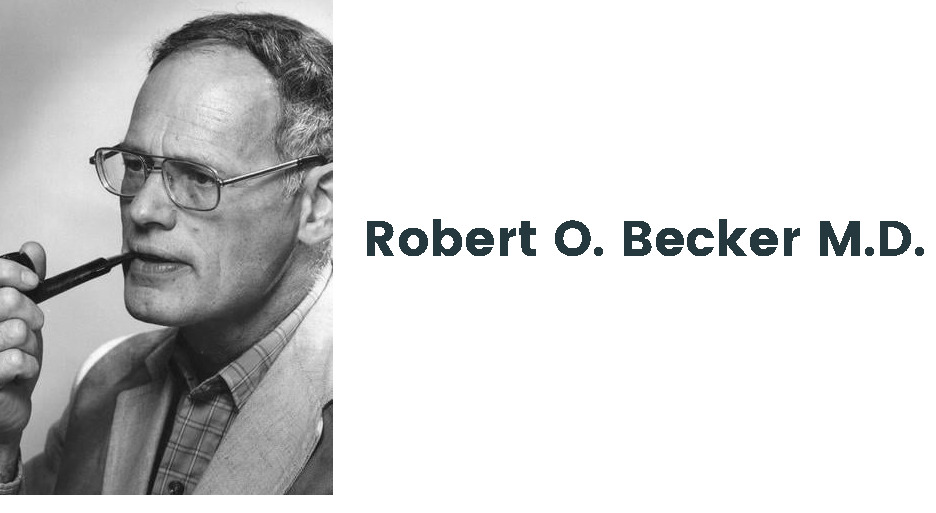
CHRONIC FATIGUE SOLVED THE ADRENAL CONNECTION BY DR. JACK HERBERT
- Natural Healing
- October 18, 2022
- 4 Comments
- 20 minutes read

Chronic Fatigue Syndrome is an illness that is as perplexing as it is devastating. Some of the symptoms are:
Lack of energy and vitality, episodes of body shaking with anxiety, stress maladaptation (low physical and mental-emotional stress tolerance), rapid heartbeat and/or fluttering, low body temperature, poor memory, muscle pain, muscle twitching, migraine headaches, digestive disturbances, irritability insomnia, shortness of breath, and low immune function.
I believe C.F.S is an endocrine disorder, specifically an adrenal disorder. I recommend the Adrenal Stress Index Test (ASI) to help confirm the diagnosis. The ASI Test is available at DiagnosTechs 1-800-878-3787 Diagnostechs .com. A High Cortisol indicates a positive test. Patients with Chronic Fatigue show exaggerated responses to low ACTH stimulus (or to stress-induced ACTH). (1) (It’s not essential that the patient with C.F.S. have the ASI Test but it does help to confirm the diagnosis.)
I also believe that C.F.S has been with us for a long time and has many different names, such as:
Nervous Exhaustion, Nervous Breakdown, Neurasthenia, Anxiety and Depression, Mitral Valve Prolapse Syndrome (M.V.P.S.), Dysautonomia, Systemic Exertion Intolerance Disease (SEID), and Postural Orthostatic Tachycardia Syndrome (P.O.T.S.).
The sign and symptom Episodes of Body Shaking With Anxiety is important because it usually indicates that the adrenal glands have been depleted in a major way due to either prolonged stress or sudden massive stress.
Many people with C.F.S. have trouble sleeping. This is due to a high cortisol level. When cortisol levels are high, the Rapid eye Movements (REM) sleep is curtailed and non-REM sleep is stimulated. Simply stated, sleep patterns and processes, are susceptible to central corticosteroid influences. (2)
This illness is often misunderstood because medicine today is concerned primarily with Addison’s Disease (Adrenal insufficiency) and Cushing’s Disease (Adrenal overproduction) and not much else in between.
Treatment is based on the following:
A. Stress Reduction B. Nutrition C. Bio-Energy Medicine
A. Stress Reduction
All types of stress must be considered when treating this illness such as:
- Mental-emotional Stress (reassurance lowers mental-emotional stress)
- Environmental Stress: Allergens such as:
- Pets (If you are allergic to a pet, you need to get rid of it. Your pet could be making you very sick. Have someone keep your pet for one month to see if there is a positive change in the way you feel.)
- Molds (If you have a mold problem it must be cleaned up and any moldy items thrown away; check basements, bathrooms, sinks, and drains).
- Dust Mites
- Pollen
Among the features of this syndrome is a high prevalence of allergy. Atopic conditions co-exist with Chronic Fatigue in over 50% of patients studied. (3)
- Temperature (temperature should be increased or decreased to tolerance).
- Noise (noise should be reduced to tolerance)
- Food Allergies (if you are found to be allergic to specific foods, you should eliminate them from your diet as much as possible.)
- Pain (Acupuncture can be helpful in alleviating the muscle pain associated with this illness. Chiropractic treatment may also be helpful.)
- Electromagnetic Fields (such as electric blankets, stereo headphones, etc.)
- Exercise: When the patient with CFS is in the early stages of recovery they are not going to be able to exercise. In fact exercise will make them worse. However, as the patient recovers and gains strength they should reach a point where they will be able to start exercising. When they do they should avoid strenuous exercises such as weight-lifting, push-ups, leg lifts, etc. These types of exercises put too much stress and strain (which is medically referred to as intrathecal pressure) on the Adrenal Glands and can cause a major setback during recovery and this we want to avoid. Walking to tolerance is the best exercise. Light stretching is also good. As a rule, do what your body will allow but avoid the strenuous types of exercises mentioned above.
In her book, “Confronting Mitral Valve Prolapse Syndrome” by Lyn Frederickson, MSN (which we will be discussing later on) Ms. Frederickson does a good job illustrating which exercises are safe to do and which exercises should be avoided during recovery.
Remember, you don’t want to be lifting anything heavy or helping anyone lift anything heavy, push or pull anything heavy, no leg-lifts, sit-ups, push-ups, or lifting any weights. If you do something too strenuous, you can still completely recover but it can make recovery more difficult and take longer, and as I said before we really want to avoid this if we can.
B. Nutrition
Diet is very important. I am not asking that you make drastic changes in your diet, but I am recommending that you include the following in your diet. Tuna Fish is a very good source of protein. Try to eat a Tuna Fish sandwich two or three times a week. Other fish, such as Flounder, Sole, Salmon, and Catfish are also good sources of protein and contain low levels of mercury. I recommend eating chunk light tuna fish because it has less mercury than Albacore or solid white tuna.
Beans are another good source of protein, try to include beans in your diet four times a week or more (string beans, lima beans, baked beans, kidney beans, etc.). Have a bean burrito at your favorite taco stand.
Try to include raw vegetables such as celery and carrot sticks in your diet every day. Buying a juice extractor is a good idea. (Juice celery, carrots, spinach, parsley, etc.). If you do not have access to a juice extractor substitute three 5.5 OZ (163 ml) cans of V8 juice a week. Try to eat a banana every day.
It is all right to include meat, eggs, and poultry in your diet. Try not to eat red meat more than twice a week, but if you do eat red meat more than twice a week don’t worry about it. Also, try to include raw almonds and raw walnuts in your diet on a daily basis. Other nuts such as pecans, macadamia nuts, and Brazil nuts are good too. Nuts are an excellent source of Omega 3 oils as well as other nutrients. Also, include one tablespoon of extra virgin olive oil three times per week in your diet. (You can put it on a salad, or bread, or take it right off the spoon.)
Also, I recommend a green superfood supplement such as Green Magma (original formula). Stir one tablespoon into four to six ounces of water every day.
Avoid stimulants such as caffeine and ginseng.
Many people with chronic fatigue are sensitive to drugs and alcohol. If you are sensitive to drugs and/or alcohol, you should avoid them as much as possible.
I recommend the following nutritional supplements to be taken on a daily basis:
- Between 50 and 100 mg of B complex vitamins. You may have heard B complex referred to as Stress B complex or Stress tabs. That’s because B complex and other nutrients are essential for corticosteroid production and the adrenal glands primarily produce corticosteroids.
- Also, take an additional 500 mg of Vitamin B5 (Pantothenic Acid)
- Approximately 30 mg of Zinc
- 10 mg of Manganese
- 400 mg of Magnesium
- 10,000 IU of Vitamin A
- 300 mg of Calcium (Citrate)
- 1000 to 2000 mg of Vitamin C
Additional supplements are not essential but are important and should be taken on a daily basis
- Selenium 200 mcg
- Chromium 200 mcg
- Vitamin D 400 IU
- Natural Vitamin E 400 IU
- Molybdenum 100 mcg
- Boron 2 mg
- Potassium 99 mg
- Sublingual B12 500 mcg
Taking a Kelp tablet every day is a good idea unless you are allergic to Kelp. If you are a menstruating female, you should probably be supplementing iron. However, there are some contraindications for taking iron. Ask your healthcare provider if it is okay to supplement with iron and how much to take.
Vitamins and minerals can be taken individually or in a multivitamin multimineral formula. Two multivitamin multimineral supplements I like are:
- Pure Encapsulations Nutrient 950 without copper and with or without iron depending upon whether you need iron or not. (take as directed) [pureencapsulations.com 1-800-753-2277]
- Freeda Vitamins. I like their Ultra Freeda Formula available with or without iron depending upon whether you need iron or not. (take as directed)[freedahealth.com 1-800-777-3737}
Fresh air and Sunshine:
Direct exposure to sunlight can increase the body’s vitamin D supply. There may be other benefits to direct sunlight exposure as well. If you can try to get direct sunlight exposure several times a week (approximately 10 minutes for people with lighter skin tones and up to 25 minutes for people with darker skin tones) Between 11 a.m. and 2 p.m. is the best time for sun exposure to obtain vitamin D. Use sunscreen to protect your skin from sunburn. Research published in the British Journal of Dermatology found that using sunscreen may not block vitamin D synthesis. (4) Wear a hat to protect your ears and face from sunburn. When you’re finished sunbathing you can sit in the shade and get the benefits of daylight for your eyes and the benefits of breathing fresh air. Never look directly into the sun. Since there are some contraindications for direct sunlight exposure, consult with your healthcare provider or a dermatologist about your skin type and what is best for you.
C. Bio-Energy Medicine
I find the Cayce Wet Cell to be helpful in the treatment of Chronic Fatigue Syndrome. It appears to have a regenerating effect.
I recommend using the Wet Cell for approximately 45 to 60 minutes a day. This should be done every day until the patient is fully recovered. If you like you can use the Wet Cell for 45 minutes a day five to six days a week and probably still get good results.
After two to three months of treatment with the Wet Cell, improvement should be noticed. Continue using the Wet Cell until completely recovered, then discontinue using it. Complete recovery may take up to six months or longer depending on where you are in recovery. Six months may seem like a long time and a lot of treatment, but it is a lot faster than the several years or longer that recovery may take otherwise.
The electrical energy emitted by the Wet Cell is apparently compatible with the bio-energy spectrum emitted by the Human Body. That is to say that the electrical energy emitted by the Wet Cell apparently is the same electrical energy that is emitted by the healer’s hand.
Keep in mind that the human bio-energy spectrum consists of more than just an electrical component. It consists of other components such as infrared and infrasound (for which there are simulation devices available on the market today) as well as other components but the electrical component is probably the most important. The Wet Cell causes no ill effect.
If you do not have access to a Wet Cell try substituting Reiki Treatments for the same treatment time, approximately 45 minutes a day, every day until completely recovered. As with the Wet Cell, complete recovery may take up to six months or longer. Since having Reiki treatments on a daily basis can be costly, you may want to have a loved one or close friend learn how to give you Reiki treatments. You should be able to find a Reiki Master online that teaches Reiki level 1. You may even be able to find Reiki level 1 instruction on Youtube.
If you do not have access to a Wet Cell or Reiki Treatments, try practicing Medical Qi Gong. The Wet Cell is available at Baar Products. (l -800-269-2502) www.baar.com
Use the Gold Chloride Solution. 1 grn/oz. 3 oz. bottle
Use the Willow Charge kit.
For more information on Energy Medicine, read “Cross Currents” by Robert O. Becker, M.D. Dr. Becker was a pioneering researcher and leading expert in the field of biological electricity and regeneration. He was twice nominated for the Nobel Prize. He also authored the book “The Body Electric”.
For more information on Chronic Fatigue, read “Chronic Fatigue Unmasked” by Gerald E. Poesnecker, N.D., D.C. His book may be available at your local library or online. Dr. Poesnecker’s book offers a lot of good information on Chronic Fatigue. However, I feel his use of glandulars may not agree with some people. I also feel his energy medicine modalities may not be as beneficial as the Wet Cell. I feel the Wet Cell is far better and can be used at home.
I also recommend reading “Confronting Mitral Valve Prolapse Syndrome” by Lyn Frederickson M.S.N. (Warner Books). Ms. Frederickson refers to this illness as Mitral Valve Prolapse Syndrome because of the heart symptoms that are sometimes associated with it. I believe she is actually describing Chronic Fatigue Syndrome. As I said before, I believe C.F.S. is an endocrine disorder, specifically an adrenal disorder, and endocrine disorders can cause heart irregularities.
I actually refer to this illness as Adrenal Depletion Syndrome (A.D.S.). But, for the remainder of this article, I will continue to refer to it as C.F.S.
All the symptoms, including the heart symptoms, usually clear up when the patient is fully recovered.
Ms. Frederickson writes about an imbalance in the autonomic nervous system known as Dysautonomia, which is common in people with C.F.S. One of the characteristic signs of Dysautonomia is dilated pupils. Healthcare providers should be made aware of this sign. Dysautonomia is congenital.
Ideally, a person with Dysautonomia should be able to go to a healthcare provider at an early age; the healthcare provider should then be able to recognize this sign, confirm the diagnosis, and then give the patient an appropriate list of nutritional recommendations (such as those mentioned in Section B) before the major symptoms of C.F.S. develop, usually in the patient’s thirties.
Dysautonomia is not life-threatening. When a patient’s nutritional needs are met and they are fully recovered, the nervous system goes back into balance and the pupils are no longer dilated.
Not everyone with C.F.S. has Dysautonomia, but for most people with C.F.S., if their nutritional needs had been met in the first place, they would not have gotten sick in the second place.
Ms. Frederickson also writes that people with C.F.S. have an intolerance to sugar. That is because the adrenal glands are involved in sugar metabolism known as glucogenesis. When the patient is fully recovered, their sugar tolerance should go back to normal.
Two other books worth mentioning are:
“Hope and Help For Your Nerves” and “Peace From Nervous Suffering”. Both were written by Claire Weekes.
In her books, Ms. Weekes does a good job of explaining the symptoms and different stages of recovery that are involved with this illness.
The books I mentioned in this article may be available at public libraries, online libraries, and online bookstores, such as Amazon.com and ABEbooks.com.
Other often over-looked health disorders that can cause fatigue-like symptoms are Subclinical Hypothyroidism, Yeast or Fungal Overgrowth (read “The Yeast Connection” by William G. Crook, M.D.), Viral and/or Bacterial disorders, Parasites, and Iron deficiency Anemia.
I included a photo of a baby with dysautonomia. Note the sign dilated pupils. If this baby’s nutritional needs are met the autonomic nervous system should go back into balance and the pupils should no longer be dilated. Not everyone with dilated pupils has dysautonomia (there are other causative factors that cause dilated pupils) but certainly, dysautonomia should be considered. I also included a photo of a female adolescent with the sign dilated pupils.
One last thing I want to mention is pacing. While the patient is in recovery they have to learn how to pace themselves in order to avoid and limit setbacks. For the patient with CFS, it feels like they are on a roller coaster. Two steps forward then one step back until they are completely recovered. In order to pace yourself the main thing to remember is to listen to your body and do what your body will allow you to do.
As time goes by things change so some of the things I recommend in this article may not be available such as the A.S.I. test, books, and maybe even the Wet Cell. Do the best you can with what you have available. Keep persevering, try to be optimistic, and know that you are not alone, eventually, in time you should completely recover.
If you have any underlying medical conditions, consult your healthcare provider.


REFERENCES:
(1) Mark A. Diametric, et al. J. Clin. Endocrinol, and Metabl. 73:1224 (1991)
(2) Born, et al. Biol. Psychiatry. 2..141591986).
(3) Straus S., et al. J. Allergy & Clin. Immunol. 81:79 (1988)




4 Comments
Your work is impressive, keep it up!
I really enjoyed reading this post, thank you! Fantastic job!
I really enjoyed reading this post, thank you! Fantastic job!
This article was truly enjoyable, thank you! Fantastic job!